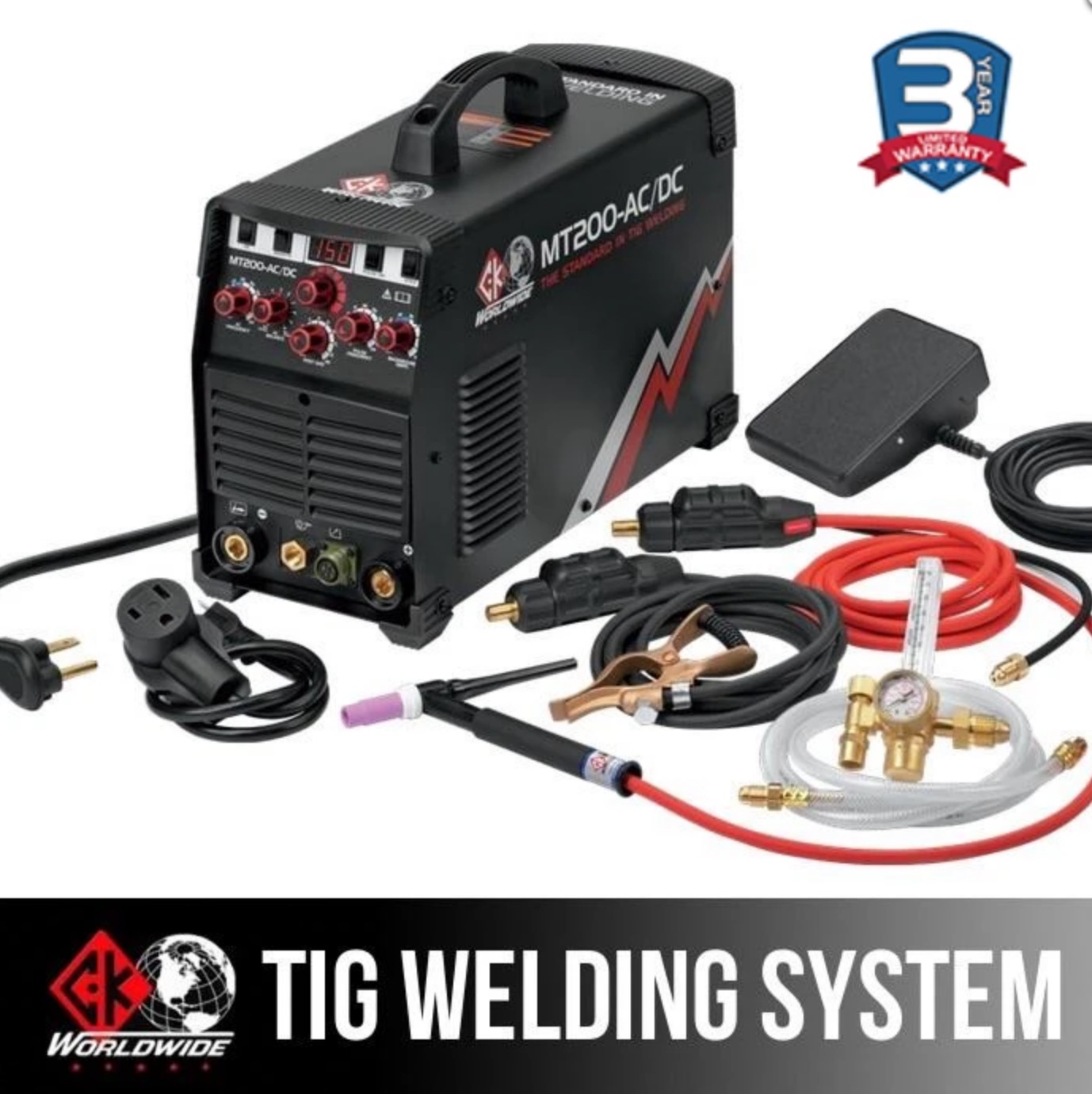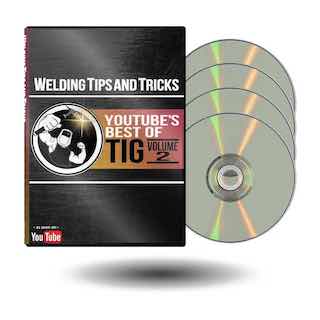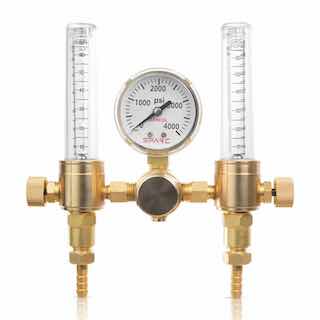Different Types of Welding...
TIG, Stick , Mig, and Flux Core make up most of it
The video below is an example of tig welding
When you look at the history of welding...and dont worry, we are not
about to launch into the discovery of acetylene gas or how the
Mesopotamian s made their swords.
* But if you look
back to the blacksmith days when metal was welded by heating it in a
forge and then it has hammered together to make a weld,
* and then you look ahead to when the first gas welding torch was
invented which was able to locally melt metal with a much more focused
heat than a forge could.
scroll down for more...
video shows example of Stick Welding aka Shielded Metal Arc Welding with the same TIG machine as first Video
mig, stick, and dual shield flux core welding video
* and then arc welding was invented which was an even more intense heat than a gas torch
* and then TIG welding came along which could pinpoint the heat even more and could make very small and precise welds
* and then plasma arc welding came into use which pinpointed the heat even more than tig welding
* and then laser welding and electron beam welding were invented which can pinpoint the heat way more than any of the previous types of welding could.
You might just begin to see a trend in the development in all the different types of welding.
What is the trend?
FOCUS
Being able to focus the heat... the more we are able to focus the heat source, the more precise a weld can be laid down...and usually with less overall heat input into the metal.
What? that sounds contradictory. but think about it. take gas welding steel for example, a very large area is heated to red hot in order to get the weld area hot enough to create a puddle and weld.
Lets Swing the pendulum the other way to laser welding...especially pulse yag laser welding where a laser beam is pulsed on and off to allow for quick melting and solidifying, and the metal hardly even gets hot right next to where it was melted. things happen so fast that the properties of the base metal are barely affected. That is because the heat is so focused. solidification rates are so quick that the microstructure of the weld right next to where it melts is nearly the same as areas completely away from the weld.
Now I know most of you reading this dont have a laser welder in your garage so what we will talk about for the rest of this page is the different types of welding most commonly used by the average joe welder like you and me.
There are all kinds of different types of welding but when it comes to the types of welding done most to build and fix things.there are really 3 main types.
I wont even include gas welding in this discussion because so few people use it these days. except for metal sculpture artists, and a few other purists like experimental aircraft enthusiasts, gas welding just is not done that much.
What is done a lot are TIG, MIG, and Stick
1. Tig welding
2. Shielded metal arc welding also known as just plain arc welding or stick welding
3 Mig welding
So where do you use each one?
Because they are all very different...and still all very good.
tig welding excels at stainless steels, nickel alloys, aluminum, magnesium, titanium, cobalt, and copper alloys. But the metal needs to be pretty clean and it can be slow.
Mig welding is usually the best choice for general fabrication of steel, stainless steel, and aluminum because of its speed and the ability to tack weld with one hand.
Stick is still king of the outdoors because misting rain or gusty winds don't stop the show. the metal does not have to be nearly as clean either.
I have people ask me all the time if anyone actually still uses stick welding. I guess shows like monster garage or orange county choppers give the impression that the only type of welding done anymore is tig welding and mig welding. But that’s not true at all. There are still tons and tons of 6010 and 7018 being used every year to weld pipe, build bridges, fix tractors, and create yard art. Stick welding is here to stay because it is such a proven process.
If you are outside in the wind or misting rain, or underneath a tractor trailer frame that is covered in oil and dirt Stick welding will be the best choice. It has stood the test of time.
The simplest stick welding machine is probably the buzz box with only one setting and that is amperage
A step up from there would be a DC stick machine with polarity selector as well as amperage setting but that is still pretty simple. what could be more simple that setting polarity and amperage, chucking up a 6011 rod in the stinger and then welding?
What about mig welding?
MIG is more sensitive to wind and rain and has a additional settings to fiddle with. but mainly its
1. voltage
2. wire speed
pretty simple until you get into spray transfer, flux core, and pulse mig settings, and spool gun mig for aluminum.
Then you need to learn about different shielding gases, modes of metal droplet transfer, and what polarity works for what as well as learning about inductance settings on some mig welders.
Another misconception is that flux core mig welding is only for the small 115v mig welders at home depot and northern tool. That’s wrong too.
Flux core welding is used extensively on heavy equipment manufacture, pipe welding, ship production and all kinds of things where high quality welds along with high production speeds are important.
Tig welding can have a whole bunch of parameters if you are using a tig inverter with a bunch of knobs.
At its core its pretty simple but when you consider all the metals that can be welded with tig, along with all the different shielding gases that can be used, pulse parameters, types of tungsten electrodes, polarity, waveshape adjustments, amplitude, etc. , it can get pretty complicated.
Tig welding is probably the most versatile type of welding there is because almost any metal can be tig welded.
Carbon and low alloy steels like 1010 steel or 4130 chromoly
Examples, bicycle frames, chopper frames, roll cages for motorsports, pipe for nuclear power, exhaust pipes
Stainless steels like 301, 304, 316, 321, 17-4, 410, etc
Examples, Food service kitchen equipment, aircraft ducting, tanks for corrosive solutions, piping, exhaust headers
Nickel alloys like hastelloy and inconels
Examples, Aircraft engine parts and ducting, tubing and piping for power plants, race car components.
Aluminum alloys like 3003, 5052, and 6061 t6
Examples, Race car parts, marine hardware, truck tool boxes, tuna towers, ski boat hardware, pontoon boats, aircraft prop spinners and other aircraft parts.
Magnesium alloys like AZ31b or magnesium castings like AZ92A or EZ33A
Examples, Aircraft gearbox housings, helicopter gearbox housings
Titanium alloys like 6al4v or commercially pure titanium
Examples, Aircraft ducts, golf clubs, piping for seawater conditions, race car parts.
Cobalt alloys like l605, satellite 6b, or Haynes 188
Examples, Hot section parts in gas turbine engines, wear resistant material for manufacturing factories
Copper alloys like nibral bronze, pure copper, or aluminum bronze
Examples, Boat props and marine hardware, ornamental architectural art, etc.
Even pot metal can be welded using tig welding
Pot metal is usually composed of aluminum, zinc, and who knows what.

















